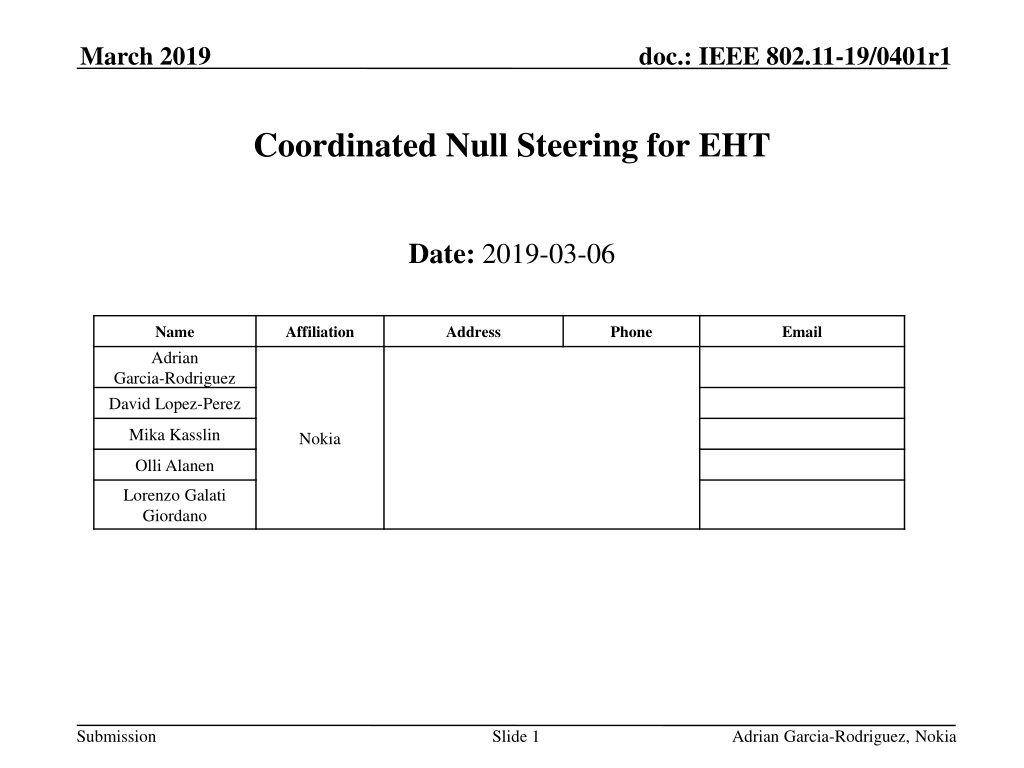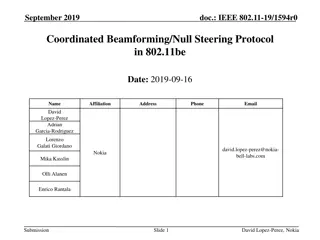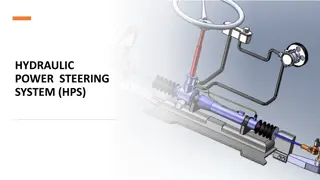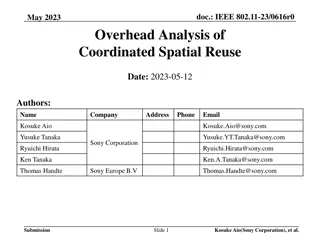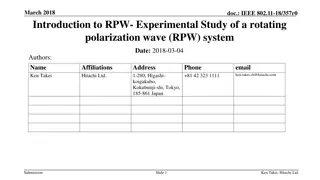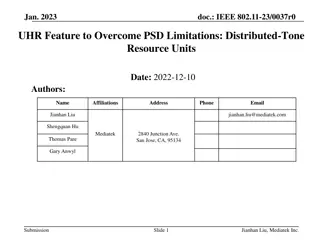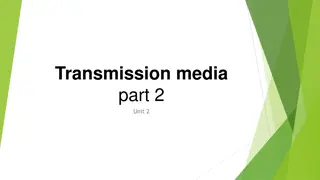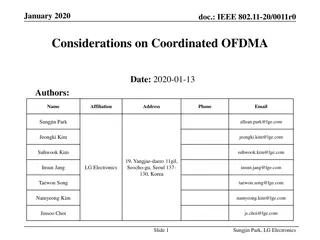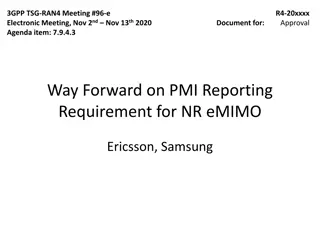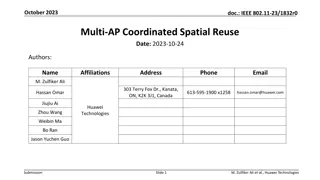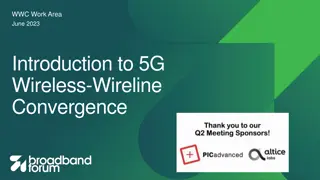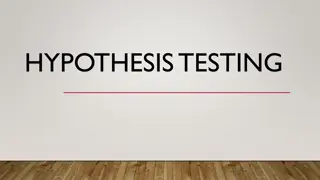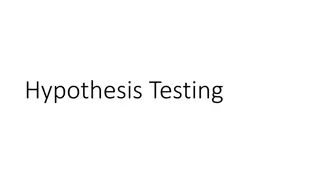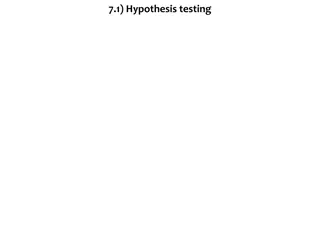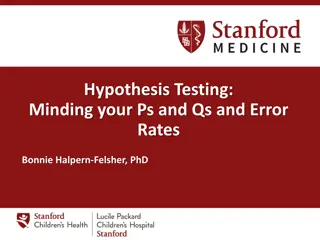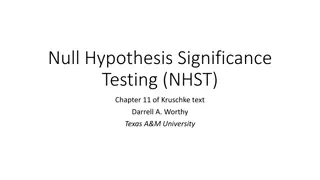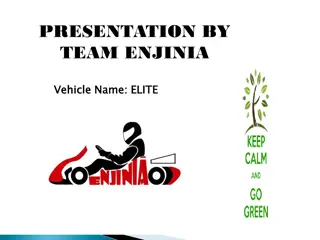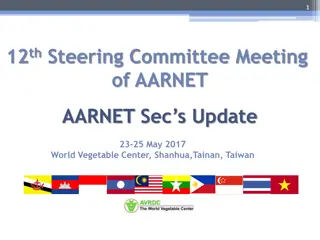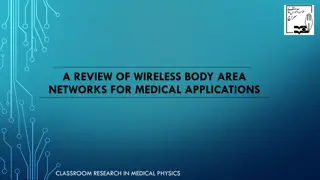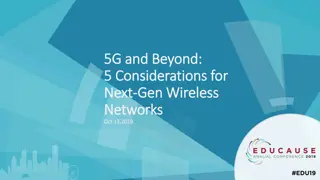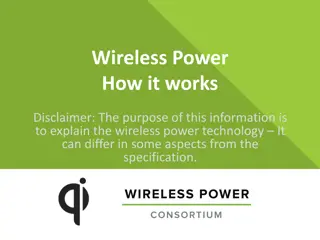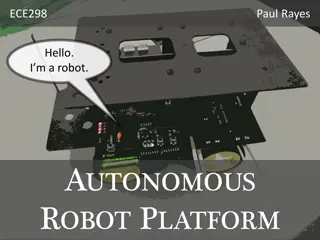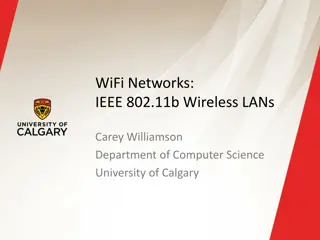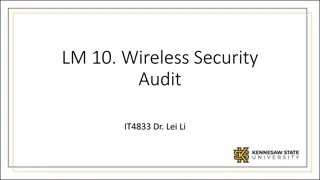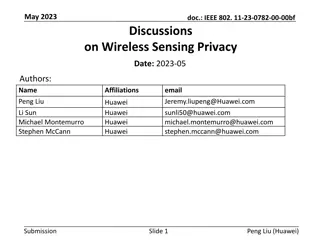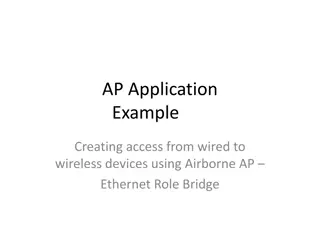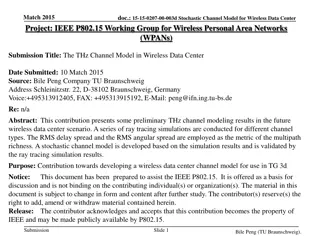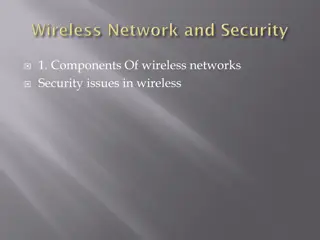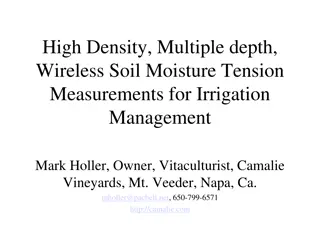Coordinated Null Steering for Enhanced Wireless Communication
Null steering in wireless technology allows devices to place spatial radiation nulls towards non-served STAs for interference suppression, improving spatial reuse and mitigating inter-cell interference. This document discusses null steering-related proposals in EHT, including challenges, benefits, and scenarios for coordinated null steering in multi-AP coordination alternatives.
Download Presentation

Please find below an Image/Link to download the presentation.
The content on the website is provided AS IS for your information and personal use only. It may not be sold, licensed, or shared on other websites without obtaining consent from the author. Download presentation by click this link. If you encounter any issues during the download, it is possible that the publisher has removed the file from their server.
E N D
Presentation Transcript
March 2019 doc.: IEEE 802.11-19/0401r1 Coordinated Null Steering for EHT Date: 2019-03-06 Authors: Name Adrian Affiliation Address Phone Email Garcia-Rodriguez David Lopez-Perez Mika Kasslin Nokia Olli Alanen Lorenzo Galati Giordano Submission Slide 1 Adrian Garcia-Rodriguez, Nokia
March 2019 doc.: IEEE 802.11-19/0401r1 Introduction Null steering is a wireless technology through which a device performing data transmission/reception can place spatial radiation nulls towards non-served STAs for interference suppression purposes Null steering presents a number of benefits Leads to a better spatial reuse Mitigates inter-cell interference It also has challenges APs need to acquire channel state information (CSI) from non-served STAs APs require coordination procedures for controlling null steering transmissions Illustration of coordinated null steering in downlink Submission Slide 2 Adrian Garcia-Rodriguez, Nokia
March 2019 doc.: IEEE 802.11-19/0401r1 Null steering-related proposals in EHT In previous EHT TIG/SG meetings, null steering has attracted considerable attention, touching on a number of topics - Motivation for EHT 11-18-1461: Discussions on the PHY features for EHT Xiaogang Chen (Intel) 11-18-1533: View on EHT Candidate Features Yusuke Tanaka (Sony) 11-18-1547: Technology Features for 802.11 EHT Kome Oteri (InterDigital) 11-18-1161: EHT Technology Candidate Discussions Hongyuan Zhang (Marvell) Yonggang Fang (ZTE) 11-19-0105: Functional Requirements for EHT Specification Framework - Usage of the right terminology and nomenclature in EHT 11-18-1926: Terminology for AP Coordination Sameer Vermani (Qualcomm) 11-18-1509: Discussions on Multi-AP Coordination Jianhan Liu (MediaTek) 11-18-1576: Considerations on AP Coordination Bo (Boyce) Yang (Huawei) Submission Slide 3 Adrian Garcia-Rodriguez, Nokia
March 2019 doc.: IEEE 802.11-19/0401r1 Null steering-related proposals in EHT - MIMO channel sounding issues and enhancements 11-18-1191: MU sounding improvements Sigurd Schelstraete (Quantenna) 11-18-1982: Consideration on multi-AP coordination for EHT Kiseon Ryu (LG electronics) - Null steering performance analysis 11-19-0071: Coordinated Multi-AP Transmission for EHT Kome Oteri (InterDigital) None of the above contributions identify the scenarios where coordinated null steering could be the most appealing multi-AP coordination alternative In this contribution, we describe the challenges of coordinated null steering, as well as the scenarios where it is particularly effective Submission Slide 4 Adrian Garcia-Rodriguez, Nokia
March 2019 doc.: IEEE 802.11-19/0401r1 Multi-AP coordination techniques Joint Distributed MIMO (D-MIMO) Coordinated OFDMA Coordinated null steering Reuses time/freq. resources through joint spatial multiplexing [1, 2] Coordinates time/freq. resource allocation [3, 4] Reuses time/freq. resources by placing spatial radiation nulls Solution with the most demanding synchronization and backhaul requirements Solutions with simplified requirements Null steering offers an appealing complexity and performance trade-off Submission Slide 5 Adrian Garcia-Rodriguez, Nokia
March 2019 doc.: IEEE 802.11-19/0401r1 When is coordinated OFDMA effective? Medium to large AP densities [4] Coordinated transmissions enable a more efficient time/freq. resource utilization Resource splitting among APs could suffice to provide a satisfactory performance Also for STAs experiencing high interference [4] Interference mitigation is possible through an intelligent resource unit assignment Illustration of coordinated OFDMA Coordinated OFDMA for short packets and highly interfered STAs Submission Slide 6 Adrian Garcia-Rodriguez, Nokia
March 2019 doc.: IEEE 802.11-19/0401r1 When is coordinated null steering effective? Medium to large AP densities and APs with multiple antennas [4-6] Coordinated transmissions enable a more aggressive time/freq. resource utilization Spatial reuse could be necessary to provide a satisfactory performance Also for STAs experiencing high interference and medium to high SNRs [4] APs dedicate spatial resources for interference suppression purposes Illustration of coordinated null steering Coordinated null steering for dense scenarios with multi-antenna APs Submission Slide 7 Adrian Garcia-Rodriguez, Nokia
March 2019 doc.: IEEE 802.11-19/0401r1 What does coordinated null steering require? EHT in line with other EHT targets 1. APs with multiple antennas 2. No severe spatial channel correlation among STAs 3. Efficient CSI acquisition procedures 4. Methods to acquire CSI from STAs served by other APs 5. Coordination procedures for null steering transmissions EHT more specific work EHT EHT Null steering requirements are aligned with key EHT potential features Submission Slide 8 Adrian Garcia-Rodriguez, Nokia
March 2019 doc.: IEEE 802.11-19/0401r1 Spatial domain-related requirements EHT 1. APs with multiple antennas In agreement with 16 spatial streams feature considered by EHT 2. No severe spatial channel correlation among STAs Suitable for the typical indoor channels with good condition numbers [7] STA separability can always be guaranteed through an appropriate scheduling policy EHT Illustration of AP1 receiving data from STA1 and placing a radiation null towards the non-served STA2 Typical APs and indoor channels are ideal for null steering Submission Slide 9 Adrian Garcia-Rodriguez, Nokia
March 2019 doc.: IEEE 802.11-19/0401r1 CSI acquisition-related requirements 3. Efficient CSI acquisition procedures Explicit CSI acquisition Feedback compression to reduce wireless overhead [4] Implicit CSI acquisition [8] In agreement with 16 spatial streams feature considered by EHT Would greatly limit overhead EHT Illustration of multi-user implicit CSI feedback process [8] Decreasing CSI acquisition overhead for an efficient null steering Submission Slide 10 Adrian Garcia-Rodriguez, Nokia
March 2019 doc.: IEEE 802.11-19/0401r1 Inter-BSS CSI acquisition requirements 4. Methods to acquire CSI from STAs served by other APs Communication between non- served STAs and APs is essential Multi-AP association might not be the only alternative Agreement among collaborative APs is beneficial Collaboration frames exchanged on a sporadic basis (long-term agreement) Illustration of a long term agreement between AP1 and AP2 for performing subsequent coordinated null steering transmissions Enabling CSI acquisition from non-associated STAs is crucial Submission Slide 11 Adrian Garcia-Rodriguez, Nokia
March 2019 doc.: IEEE 802.11-19/0401r1 Multi-AP coordination requirements 5. Coordination procedures for null steering transmissions a) Implicit coordination building on 802.11ax spatial reuse framework b) Explicit coordination building on coordinated OFDMA framework Handshake among APs prior to a simultaneous data TX/RX Distribution of null steering-related information prior to data TX/RX Coordinated null steering extends 802.11ax spatial reuse framework Submission Slide 12 Adrian Garcia-Rodriguez, Nokia
March 2019 doc.: IEEE 802.11-19/0401r1 Conclusions In this contribution, we identified the suitable scenarios and requirements for the implementation of coordinated null steering: Similarly to 802.11ax spatial reuse frameworks, coordinated null steering targets dense deployments with multi-antenna APs Many of the specifications required to implement coordinated null steering are essential for an efficient implementation of the 16 spatial streams feature considered within EHT. In addition, APs need to acquire CSI from non-served STAs Coordination procedures for controlling null steering transmissions should be defined Submission Slide 13 Adrian Garcia-Rodriguez, Nokia
January 2018 doc.: IEEE 802.11-19/0401r1 References [1] D. Lopez-Perez (Nokia), Distributed MU-MIMO architecture design considerations, IEEE 802.11-18/1190r0, Jan. 2019. [2] Ron Porat (Broadcom), Joint Processing MU-MIMO, IEEE 802.11-19/0094, Jan. 2019. [3] Bo (Boyce) Yang (Huawei), Considerations on AP Coordination, , IEEE 802.11-18/1576, Sep. 2018. [4] Kome Oteri (InterDigital), Coordinated Multi-AP Transmission for EHT, IEEE 802.11-19/0071, Jan. 2019. [5] G. Geraci, A. Garcia-Rodriguez, D. L pez-P rez, L. Galati Giordano, P. Baracca, and H. Claussen, Indoor massive MIMO deployments for uniformly high wireless capacity, in Proc. IEEE WCNC, Apr. 2018. [6] A. Garcia-Rodriguez, G. Geraci, D. L pez-P rez, Lorenzo Galati Giordano, Ming Ding, and Holger Claussen, Massive MIMO Unlicensed for High-Performance Indoor Networks, in IEEE GLOBECOM, Dec. 2017. [7] Sameer Vermani (Qualcomm), 16 Spatial Stream Support in Next Generation WLAN , IEEE 802.11-18/0818, May 2018. [8] Sigurd Schelstraete (Quantenna), MU sounding improvements , IEEE 802.11-18/1191, Jul. 2018. Submission Slide 14 Adrian Garcia-Rodriguez, Nokia
January 2018 doc.: IEEE 802.11-19/0401r1 Appendix Submission Slide 15 Adrian Garcia-Rodriguez, Nokia
March 2019 doc.: IEEE 802.11-19/0401r1 Wired- vs. wireless-based coordination Null steering admits both wireless and wired implementations Wireless-based coordination Overhead can be always limited by simplifying the coordination Suitable for implementations with explicit or implicit coordination Wired-based coordination Solution with the smallest wireless overhead Suitable for implementations with explicit coordination Coordinated null steering does not require a wired-based coordination Submission Slide 16 Adrian Garcia-Rodriguez, Nokia
